
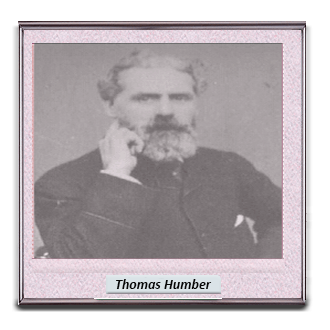 By the late 1880s saw that the time was right to move out of cycle manufacturing, rapidly selling the company to a group of investors, who immediately took the new bicycle manufacturing conglomerate public.
By the late 1880s saw that the time was right to move out of cycle manufacturing, rapidly selling the company to a group of investors, who immediately took the new bicycle manufacturing conglomerate public.
The new company was given the name Humber & Co Limited, and as part of the agreement, Thomas Humber remained as head of the company for the next five years.
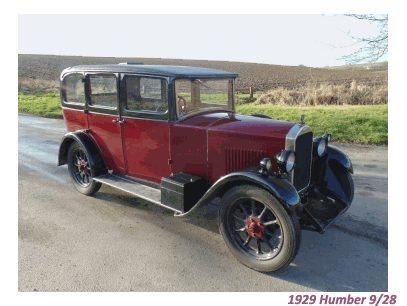 In 1889, Humber persuaded his partners/backers to invest in car manufacturing, establishing the group's fourth and most extensive production unit in the Midlands city of Coventry, which was already becoming one of the epicentres of the rapidly burgeoning UK car industry.
In 1889, Humber persuaded his partners/backers to invest in car manufacturing, establishing the group's fourth and most extensive production unit in the Midlands city of Coventry, which was already becoming one of the epicentres of the rapidly burgeoning UK car industry.
In 1892. Humber, while still was only in his early Fifties but a wealthy man, fulfilled his commitment to step down as chairman of Humber
After that minor hiccup, production began in earnest under the supervision of a fresh management team, and a series of vehicles started to trickle of the production line at Coventry.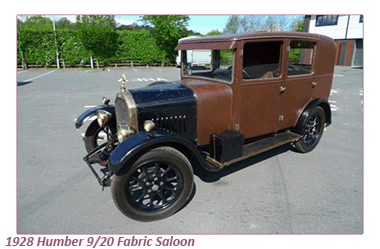
 Humber remained dormant for a very little time, as they had already built a strong reputation, bringing a tremendous demand for the cars they produced. Soon it was back to business as usual, with the only difference that they were now a limited liability concern, trading as Humber Limited.
Humber remained dormant for a very little time, as they had already built a strong reputation, bringing a tremendous demand for the cars they produced. Soon it was back to business as usual, with the only difference that they were now a limited liability concern, trading as Humber Limited.![]()
 Humber's sudden and unexplained departure brought about a catalyst so severe that it that caused the company to suffer financial difficulties, so severe that they eventually closed down albeit temporarily.
Humber's sudden and unexplained departure brought about a catalyst so severe that it that caused the company to suffer financial difficulties, so severe that they eventually closed down albeit temporarily.
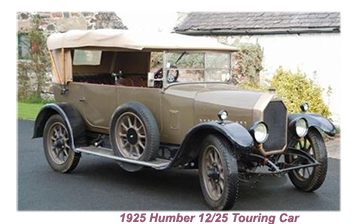 Humber Motors remained in a dormant condition for a very little time, as they had already built a strong reputation, bringing a tremendous demand for the cars they produced.
Humber Motors remained in a dormant condition for a very little time, as they had already built a strong reputation, bringing a tremendous demand for the cars they produced.
Soon it was back to business as usual, with the only difference that they were now a limited liability concern, trading as Humber Limited.
Humber were doing good business in the UK, encouraging the management team to spread activities into Europe . In 1896 the company’s first subsidiary, Humber (France), was established as part of a cycle manufacturing conglomerate taht also took in La Société des Cycles Gladiator and La Société des Vélocipedes which was reported to be among the largest monopolies in Europe.
After that minor hiccup, production began in earnest under the supervision of a fresh management team, and a series of vehicles started to trickle of the production line at Coventry.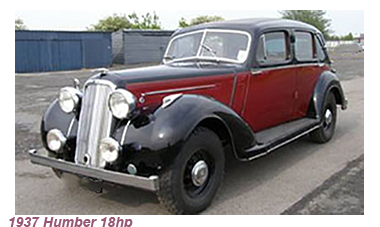 The first car produced by Humber Ltd was the Voiturette, designed by Coatalen, which made its debut in 1901.
The first car produced by Humber Ltd was the Voiturette, designed by Coatalen, which made its debut in 1901.
By 1903, Thomas Humber's car production activities had gained some impetus, with production focused at a new plant in Rysdale, Coventry, almost within touching distance of the Hillman plant.
Possibly in deference to their near neighbours, Hillman, after 1905, Humber turned their attention to the design and production of larger touring cars, starting from the 10/12hp model, followed by vehicles in the 16/20hp range. In 1907, this range was supplemented by the arrival of the Humber 15HP.
Like so many car producers of the times, with the outbreak of World War I. Humber's production facilities were turned over to the war effort.
![]()
Not too long after peace broke out, Humber was back in the business of producing top-quality vehicles, with the company's reputation growing and spreading through the UK thanks to the reliability and robust good looks of the cars they built.
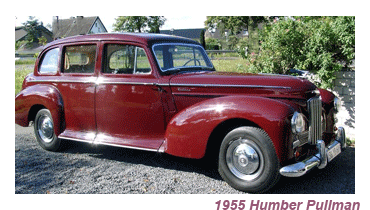 Demand for Humber vehicles continued to rise steadily all through the Twenties, with sales regularly exceeding 4,000 annually, a considerable figure in those days for an independent manufacturer, especially in the sector in which they operated.
Demand for Humber vehicles continued to rise steadily all through the Twenties, with sales regularly exceeding 4,000 annually, a considerable figure in those days for an independent manufacturer, especially in the sector in which they operated.
Towards the end of the Nineteen Twenties, confidence at the company was riding high, so much so that the decision to diversify was made, which they soon did, acquiring Commer, the Luton-based light commercial vehicle producer.
The next step that rapidly followed was the amalgamation between Humber and Hillman. A merger of minds and production facilities that took place in 1929.
![]()
Not long after, the Humber/Hillman partnership began a process which would see them become a part of the large UK-based car manufacturing concern the Rootes Group, eventually becoming a wholly -owned subsidiary of the company in 1932.
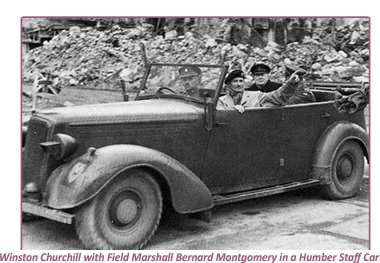 Within a short time, Rootes had overseen the launch of two new models at Humber, the 2.1-liter six-cylinder 16/50 and the 3.5-liter six-cylinder Humber Snipe.
Within a short time, Rootes had overseen the launch of two new models at Humber, the 2.1-liter six-cylinder 16/50 and the 3.5-liter six-cylinder Humber Snipe.
By the outbreak of World War II, Humber Cars had established a strong position at the top end of the market, thanks to their technical development as much their stylish bodies produced for them by Pressed Steel.
Once again the company's production was devoted to the war effort, although this time around a number of Super Snipes as well as other variants were built for the British Army.
These Snipes were destined as staff cars, with the ultimate accolade coming from Commander-in- Chief of the British Army, Field Marshall Bernard Montgomery, who picked up a Humber Saloon to take him to the front line.
![]()
Not long after, the Humber/Hillman partnership began a process which would see them become a part of the large UK-based car manufacturing
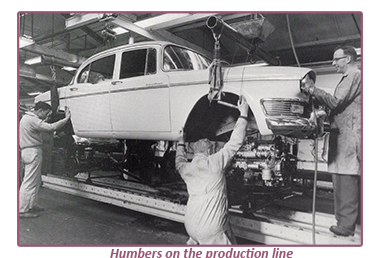 Apart from producing private cars during World War II, Humber were also responsible for the development of a number of specialist military vehicles, which they continue to build long after the war ended. These vehicles were destined not only for the British Army but also for armed forces abroad, earning valuable export sales.
Apart from producing private cars during World War II, Humber were also responsible for the development of a number of specialist military vehicles, which they continue to build long after the war ended. These vehicles were destined not only for the British Army but also for armed forces abroad, earning valuable export sales.
Throughout the Fifties, Rootes continued with their tried and tested policy of producing very few models, while replenishing them with constant updates.
This highly cost-effective system meant that, for the entire decade of the Fifties, with Humber’s whole production based on just three models, the Hawk, the Super Snipe and the Pullman.

